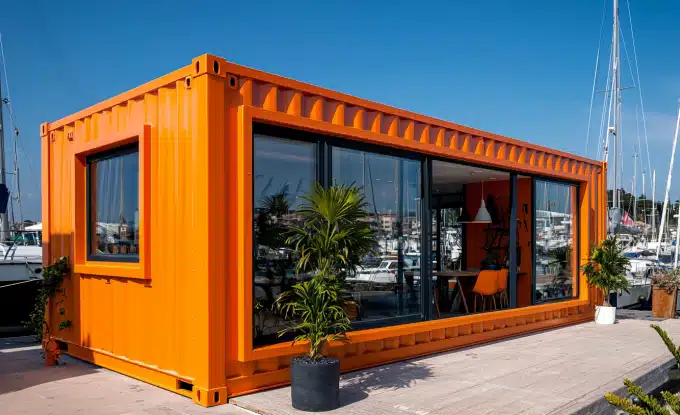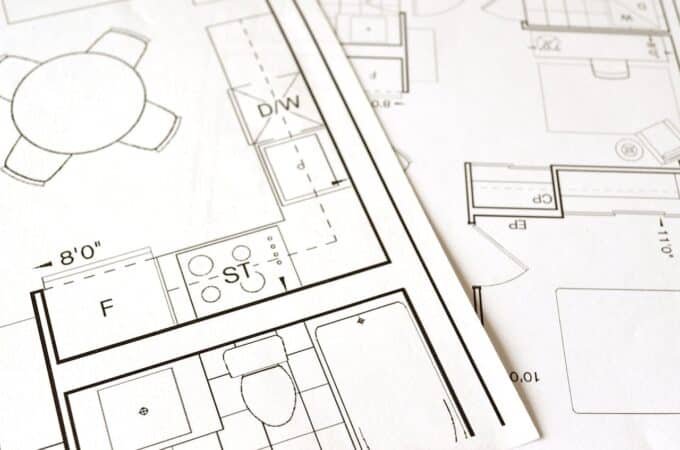
5 Industries Transformed by the Advancements in 3D Modeling
Table of Contents
ToggleIntroduction
3D modeling has become a game-changer in the quickly developing fields of design and engineering, transforming how businesses tackle their most challenging problems. The power of 3D modeling has penetrated a wide range of industries, from the delicate features of biomedical devices to the aerodynamic optimization of aircraft, opening up new possibilities for efficiency, creativity, and precision.
Architecture, Engineering, and Construction (AEC)
The AEC sector is leading the way in the 3D modeling revolution. It uses this technology to expedite the design and planning stages of the process. Building information modeling (BIM) allows architects, engineers, and construction experts to collaborate seamlessly, see projects virtually, and identify issues before construction begins.
- Integrating 3D Modeling with VR/AR
The collaboration has reached new heights by integrating 3D modeling with virtual reality (VR) and augmented reality (AR), enabling stakeholders to fully immerse themselves in the design and experience the project as lifelike as possible. As a result, there have been considerable decreases in construction errors and costs, enhanced client engagement, and better-informed decision-making.
- Optimizing Building Performance
Beyond the planning phase, 3D modeling has revolutionized the performance-based design and optimization of structures. The capacity to create intricate, three-dimensional models of intricate buildings has allowed designers to assess and model the building’s overall sustainability, energy efficiency, and structural integrity. This has made constructing more energy-efficient and sustainable buildings possible, improving the built environment.
- Advancements in 3D Modeling Software
The developments in 3D modeling software have considerably enhanced the sector’s capabilities. While generative design techniques have allowed architects and engineers to investigate various design choices, integrating artificial intelligence (AI) and machine learning (ML) has made automated design optimization possible. The smooth integration of 3D modeling software with industry-specific apps has expedited the design-to-construction process.
Biomedical Engineering and Healthcare
3D modeling has completely changed the design and fabrication process for customized medical devices and implants in biomedical engineering and healthcare. Engineers can now design highly tailored orthotic devices, surgical guides, and prosthetics that precisely suit each patient’s unique anatomy using 3D modeling. This leads to better patient outcomes regarding comfort, functionality, and general health.
- 3D Modeling in Surgical Planning
Precise digital depictions of a patient’s anatomy have been made possible by combining 3D modeling with medical imaging methods like MRIs and CT scans. This has completely changed surgical planning by enabling medical practitioners to create individualized treatment plans, anticipate problems, and practice complex surgeries.
- 3D-Printed Anatomical Models
Beyond customized gadgets, 3D-printed anatomical models have emerged as indispensable resources for patient communication and medical education. These incredibly realistic physical representations of human anatomy help students and healthcare professionals better comprehend intricate structures, plan interventions and include patients in their care.
- Advancements in 3D Bioprinting
The biomedical profession has reached new heights thanks to breakthroughs in 3D bioprinting technology. This ground-breaking method could revolutionize healthcare by addressing the severe lack of organ donors and advancing regenerative medicine. However, more research and discussion are needed on the moral issues and practical difficulties associated with 3D bioprinting.
Automotive Design and Engineering
The automotive sector has been at the forefront of this change, using 3D modeling to expedite the design and engineering process. For car designers, 3D modeling has become vital since it allows them to produce incredibly accurate, detailed models that can be virtually tested and assessed before a prototype.
- Integrating 3D Modeling with CAE Software
By combining 3D modeling with computer-aided engineering (CAE) software, engineers can examine vehicle components’ overall performance, aerodynamics, and structural integrity, significantly expanding the industry’s capabilities. This has shortened the time and expense involved in the development process and resulted in optimized designs, increased safety, and higher fuel efficiency.
- Advancements in Additive Manufacturing
The car business has also changed due to advances in additive manufacturing (AM) technology, which have made it possible to produce fixtures, tooling, and bespoke parts. Manufacturers may now produce customized components on-demand, cutting lead times, wasteful material use, and overall manufacturing costs by combining 3D modeling with additive manufacturing.
- Synergy with Emerging Technologies
Integrating 3D modeling with advanced technologies like machine learning and artificial intelligence is anticipated to optimize the design-to-production process further as the industry develops, spurring efficiency and innovation in the automobile domain.
Aerospace Engineering and Manufacturing
The aerospace sector has led the 3D modeling revolution, using technology to design and construct intricate aircraft components. Thanks to 3D modeling, aerospace experts can now create highly complex structures, improve aerodynamics, and lighten an aircraft’s overall weight while upholding outstanding performance and safety standards.
- Integrating 3D Modeling with CAM Software
The production process has been entirely transformed by combining 3D modeling and computer-aided manufacturing (CAM) software, making it possible to manufacture aircraft parts precisely and automatically. As a result, lead times have decreased, efficiency has grown, and quality control has improved, guaranteeing that the finished goods satisfy the exacting standards of the sector.
- Advancements in Composite Materials
3D modeling has become even more influential in the aircraft industry due to developments in composite materials. Engineers may utilize the remarkable strength-to-weight ratio and corrosion resistance of composite materials to build and evaluate structures in 3D, resulting in airplanes that are more robust and lightweight.
- Driving Innovation in Aircraft Design
The aerospace sector is predicted to maintain its leadership position in the worldwide market by driving the next generation of aircraft design and production through 3D modeling, sophisticated materials, and automated manufacturing as it pushes the boundaries of innovation.
Environmental Planning and Management
3D modeling has become a valuable tool in environmental planning and management for analyzing and visualizing intricate urban landscapes and infrastructure projects. Planners and decision-makers can better comprehend the effects of proposed developments, involve stakeholders more effectively, and make more informed decisions by building intricate, three-dimensional models of these ecosystems.
- Integrating 3D Modeling with GIS
The sector’s capabilities have been further improved by combining 3D modeling with geographic information systems (GIS), which makes spatial analysis, data integration, and monitoring of environmental changes and natural hazards possible. This has resulted in enhanced disaster readiness, more sustainable urban planning, and the creation of creative solutions to deal with urgent environmental issues.
- Advancements in Geospatial Technologies
The development of geospatial technologies, including photogrammetry, LiDAR, and remote sensing, has completely changed how 3D models are made and maintained. With these technologies, landscapes and urban areas may be accurately captured at high resolution, offering a solid basis for environmental planning and management.
- Enabling Sustainable Development
3D modeling in ecological planning and management is anticipated to grow in importance as the world struggles with the pressing problems of sustainability, climate change, and urban development. This will enable decision-makers to build more resilient, livable, and environmentally conscious communities.
Conclusion
3D modeling has revolutionized various industries, changing how we approach engineering, design, and problem-solving. The power of 3D modeling has unlocked new levels of efficiency, innovation, and precision, moving industries forward and influencing the future of their respective fields—from the minute details of medicinal devices to the aerodynamic optimization of aircraft.
The potential of 3D modeling is set to grow even more due to improvements in software, materials, and manufacturing techniques, which will open up new directions for research and exploration. Businesses and professionals in these sectors can position themselves at the forefront of their respective disciplines, providing unique solutions and fostering sustainable growth by embracing the potential of 3D modeling.
Our mission at IndiaCADworks is to provide our clients with the most recent developments in 3D modeling. To help you stay ahead of the curve by supporting your design and engineering needs. Contact us now to learn more about our extensive CAD and engineering support services.






